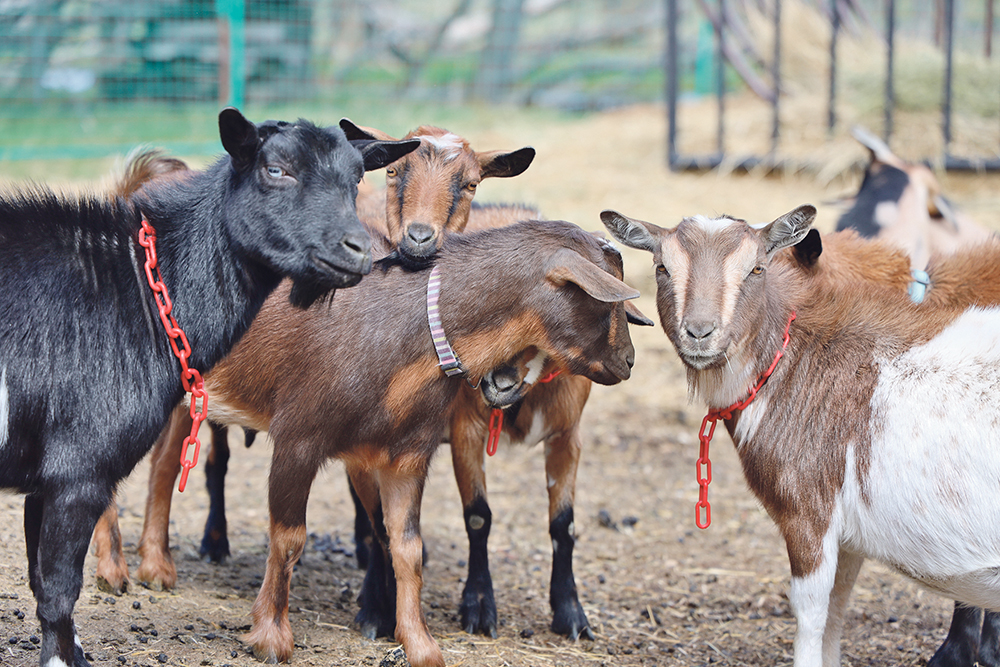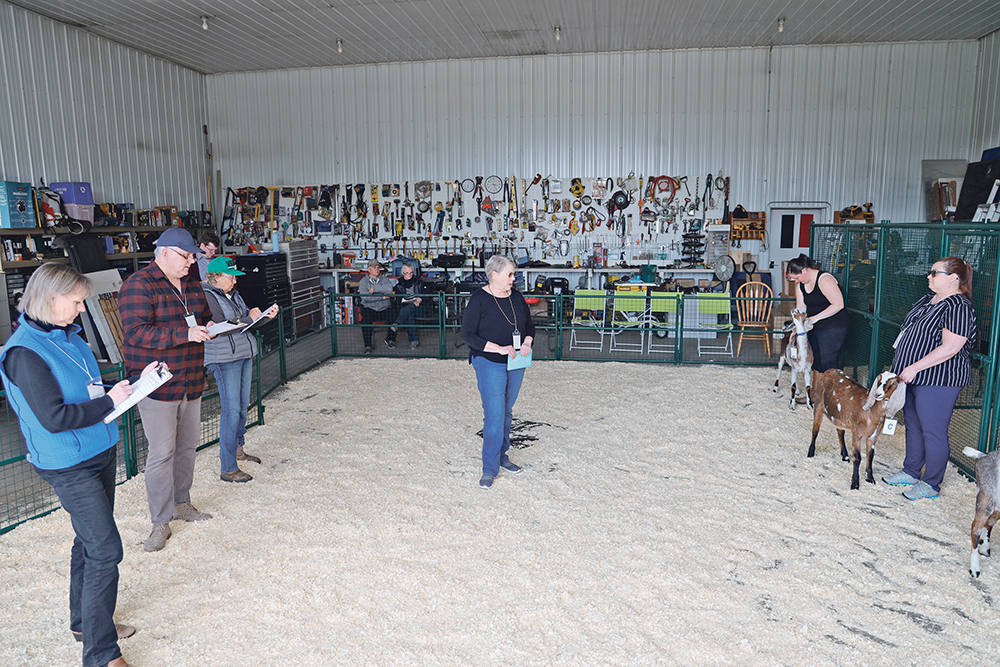Participants in a recent judging course in Alberta receive a crash course in what it takes to rate Nigerian Dwarf goats
LEDUC, Alta. — “I place the goat three over four, four over one and one over two, or maybe I should place one over two.”
Watching judges in any show ring is impressive but learning how to confidently judge and place animals is a skill that takes years of training.
“My head is going to explode. This class was a mix of aged dry female goats. It was hard to judge. You have to judge what you see,” said Nicole Poburan, a registered Nigerian Dwarf goat breeder who attended the recent Canadian Goat Society’s Judges Licensing Conference in Leduc.

Poburan bought her first dairy goat in 2014 when her daughter developed an allergy to cow’s milk. At that time there were only about five registered breeders in Alberta so she decided to make it into a business and now has more than 100 animals on her Red Deer County farm.
Most of her goats are raised for breeding stock and the milk is used for fluid, cheese and yogurt for her children. Her customers are primarily small homestead owners who start off with two does and then expand.
“I like the small size, the high butterfat content and their milk doesn’t taste like barn,” said Poburan.
As one of the few registered Nigerian Dwarf goat breeders in Alberta, Poburan wants to make sure she raises goats that the industry wants.

Chris Grab has raised Nigerian Dwarf goats since 1997 on the Leduc farm where the judging school took place. Like Poburan, Grab wanted to improve her judging skills and improve her flock of about 50 animals.
During the three-day course, participants learned rules, wrote tests and got into a mock show ring to place the goats and provide reasons for their placings.
Ed Cavanagh of Toledo, Ont., one of the judges teaching the course, said interest is growing in the raising and showing of goats. As a Canadian and U.S. certified dairy goat judge, Cavanagh travels to summer fairs and shows to judge and promote the industry.
“The goats seem to be growing in popularity because of their small size. They take less feed and don’t need much housing and there is growing popularity of goat cheese,” he said, adding that he enjoys meeting new goat breeders across the country.
Read Also

Pork sector targets sustainability
Manitoba Pork has a new guiding document, entitled Building a Sustainable Future, outlining its sustainability goals for the years to come.
“I like the camaraderie. We are all interconnected through social media.”
Training courses are held in Eastern and Western Canada each year and all certified judges must take refresher courses every two years.















